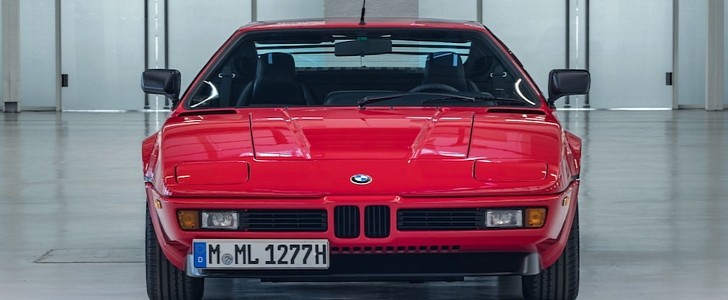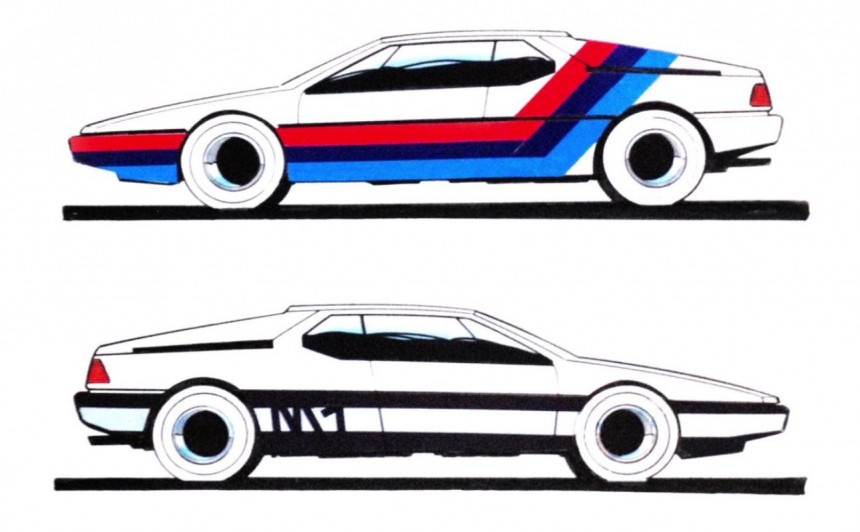As probably the only true supercar made by BMW, the M1 became one of the biggest automotive legends but, unfortunately, a car that is not very talked-about these days.
To understand better, we need to talk about how the idea of building such fantastic machine came into the heads of BMW engineers at that time. Well, the beginning of the story is pretty simple, but starts to get complicated by the end. Back in the 1970s, when people were showing their best moves on the disco dance floor, BMW was ready to take the motorsport world by storm with a new mid-engine supercar that could bring down Porsche in Group 5 racing.
The M1 was an ambitious project from the start, as it was the first vehicle designed by the BMW Motorsport department. However, at that time, the rules were strict. If you couldn't build 400 road examples of your racing cars, you couldn't compete. But time was short, so what did the German automaker do?
They contacted Lamborghini to help them develop the M1. As a result, the Italian exotic car brand created the tubular spaceframe chassis, leveraging its experience with mid-engine designs. But in an Italian way, Lamborghini pulled out from the collaboration due to serious financial problems, and BMW was left in no man's land. After some brainstorming, the Germans got their stuff together, and they reassumed control over the project in April 1978, deciding to create the chassis in-house.
By that point, the racing regulations under which the M1 had been initially designed had shifted significantly. As a result, this revelation caused many customers to cancel their orders, meaning the German automaker was at risk of not being able to sell the mere 400 units they needed so much for Group 4 homologation.
The M1 was built between 1978 and 1981 under the M (motorsport) division of BWM as a homologation special. The fiberglass body was designed by Giorgetto Giugiaro, with the BMW Turbo 1972 concept car serving as an inspiration. The M1 was still incomplete from an engineering standpoint, and after a group of former Lamborghini engineers founded the Italengineering company, they offered to complete the car's design.
BMW decided to make a huge marketing event by launching the ProCar race series in a sudden strategic move. It meant that all drivers would be behind the wheel of the M1, and to make the races super exciting, Formula One drivers joined the challenge in factory-supported vehicles, going toe-to-toe against private owners in a crowded field. Close wheels battle made people talk, so the event was a success.
Unfortunately, the car had a pretty high price, so the German automaker had to lower the costs to sell all the units. As a result, BMW made only 453 models of the M1, with 399 being road units, while the other 53 were specially made for motorsport.
Three versions of the BMW M1 were created. We are talking about the obvious "roadgoing" model with a hand-built 3.5-liter petrol six-cylinder engine, with six separate throttle bodies, twin-cams, and four valves per cylinder, developing a staggering (for that time) 273 hp and 330 Nm (243 lb-ft). Besides that, another model called the Group 4 would generate 480-hp and include more aggressive suspension tuning. The best M1 model had the incredible turbocharged 3.2-liter straight-six that had an output of 850 hp.
So, what went so wrong, that the M1 is not as celebrated today? Well, at that time, nobody was thinking about BMW as an exotic car producer. Like today, if you want a true racer, you will most likely turn your head to a Lamborghini or Ferrari. Plus, the M1 had a six-cylinder engine, and in that period, a vehicle needed to have at least an eight-cylinder powertrain to be taken seriously in this world.
But today, due to the fact that it is so rare, car enthusiasts are starting to look for M1s for their collection. As a matter of fact, a decade ago, you could buy a nice one for roughly $100,000. Now, you need to pay more than half a million for a top-notch one.
The BMW M1 fits into a unique niche today. It didn't dominate the motorsport world as the German automaker wanted, but it became a piece of art in the automotive world. Plus, it's one of my all-time favorite cars, so if you got one for sale, contact me. In about ten years.
The M1 was an ambitious project from the start, as it was the first vehicle designed by the BMW Motorsport department. However, at that time, the rules were strict. If you couldn't build 400 road examples of your racing cars, you couldn't compete. But time was short, so what did the German automaker do?
They contacted Lamborghini to help them develop the M1. As a result, the Italian exotic car brand created the tubular spaceframe chassis, leveraging its experience with mid-engine designs. But in an Italian way, Lamborghini pulled out from the collaboration due to serious financial problems, and BMW was left in no man's land. After some brainstorming, the Germans got their stuff together, and they reassumed control over the project in April 1978, deciding to create the chassis in-house.
By that point, the racing regulations under which the M1 had been initially designed had shifted significantly. As a result, this revelation caused many customers to cancel their orders, meaning the German automaker was at risk of not being able to sell the mere 400 units they needed so much for Group 4 homologation.
BMW decided to make a huge marketing event by launching the ProCar race series in a sudden strategic move. It meant that all drivers would be behind the wheel of the M1, and to make the races super exciting, Formula One drivers joined the challenge in factory-supported vehicles, going toe-to-toe against private owners in a crowded field. Close wheels battle made people talk, so the event was a success.
Unfortunately, the car had a pretty high price, so the German automaker had to lower the costs to sell all the units. As a result, BMW made only 453 models of the M1, with 399 being road units, while the other 53 were specially made for motorsport.
Three versions of the BMW M1 were created. We are talking about the obvious "roadgoing" model with a hand-built 3.5-liter petrol six-cylinder engine, with six separate throttle bodies, twin-cams, and four valves per cylinder, developing a staggering (for that time) 273 hp and 330 Nm (243 lb-ft). Besides that, another model called the Group 4 would generate 480-hp and include more aggressive suspension tuning. The best M1 model had the incredible turbocharged 3.2-liter straight-six that had an output of 850 hp.
But today, due to the fact that it is so rare, car enthusiasts are starting to look for M1s for their collection. As a matter of fact, a decade ago, you could buy a nice one for roughly $100,000. Now, you need to pay more than half a million for a top-notch one.
The BMW M1 fits into a unique niche today. It didn't dominate the motorsport world as the German automaker wanted, but it became a piece of art in the automotive world. Plus, it's one of my all-time favorite cars, so if you got one for sale, contact me. In about ten years.




